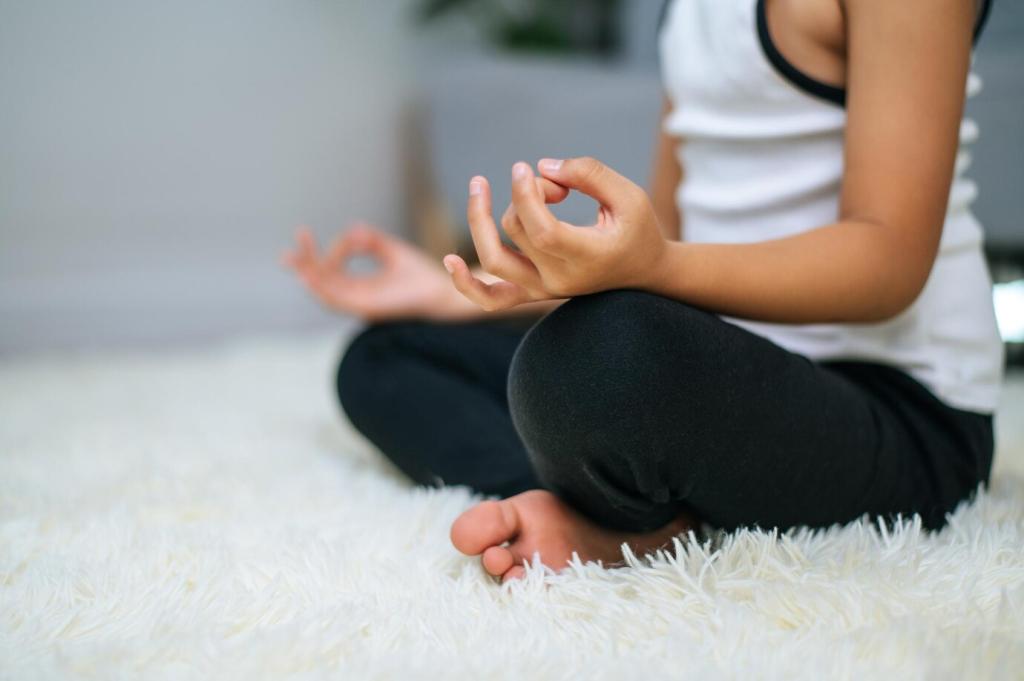
Best Guided Meditations for Stress Management
Chosen theme: Best Guided Meditations for Stress Management. Breathe in, soften your shoulders, and step into a calm, encouraging space where science, stories, and simple practices help you unwind. Stay with us, share your experiences, and subscribe for weekly stress-soothing guidance.
Why Guided Meditation Eases Stress
Guided meditations cue the parasympathetic nervous system, easing heart rate and lowering cortisol. Research shows even short, consistent sessions can improve emotional regulation, reduce rumination, and boost sleep quality, creating a reliable buffer against daily stressors.
How to Choose the Best Guided Track for You
Voice, Tempo, and Tone
Notice whether a warm, conversational voice relaxes you more than a slow, meditative cadence. Some prefer gentle pauses; others want steady guidance. Sample a few narrators and note which voice reliably softens your breath within two minutes.
Length, Setting, and Structure
Pick durations that fit real life. Five minutes for midday resets, fifteen for deeper evening release. Choose tracks with clear structure—arrival cues, breath anchors, body scan, and closing—to avoid drifting and keep your focus grounded.
Your Personal Playlist Experiment
Create a three-track playlist: rapid relief, sustained calm, and sleep support. Use each at the same time daily for one week, then journal stress levels before and after. Share your results so others can learn from your tweaks.
Top Styles of Guided Meditations for Stress

Breath-Focused Guidance
Tracks that cue counting, lengthened exhalations, or box breathing help regulate arousal quickly. If your stress feels like restless energy, structured breath patterns can steady your system and give your mind a simple, calming task.

Body Scan and Progressive Relaxation
A gentle sweep from head to toes unknots hidden tension. Narrators invite you to notice sensation without judgment, then soften what you can. This approach is ideal for desk fatigue, clenched shoulders, and stress stored in the jaw.

Loving-Kindness for Emotional Soothing
Warm, compassionate phrases reduce harsh self-talk and soothe social stress. If your tension spikes after difficult interactions, guided loving-kindness can replace internal criticism with steadier goodwill, making tomorrow’s conversations easier to navigate.



Create a Calm Corner for Guided Practice
Choose one sensory cue—a soft lamp, gentle scent, or textured blanket—to signal safety when the guided voice begins. Associating a specific environment with calm helps your nervous system settle faster each time you press play.
Create a Calm Corner for Guided Practice
Before you start, silence notifications and close extra tabs. Download tracks offline to avoid buffering stress. A tidy digital space protects the fragile first minutes of relaxation, making every guided minute more rewarding and effective.
Create a Calm Corner for Guided Practice
Snap a photo of your calm corner—chair, mat, or favorite mug—and describe the guided tracks you pair with it. Your ideas can inspire others to craft a comforting ritual that reliably dissolves stress after demanding days.

After-Anxiety Protocol
When stress spikes, try a short grounding track, then a longer body scan, followed by a few minutes of silent breath. This layered approach moves you from survival mode to thoughtful presence without overwhelming your attention.

Track What Works
Log which guided sessions bring the fastest relief. Note narrator, length, and technique used. Over time, patterns emerge, letting you assemble a personalized toolkit for different stressors—morning rush, conflict, or pre-sleep restlessness.
Look for five-minute tracks featuring counted exhalations, steady pacing, and gentle grounding cues. Ideal for mid-meeting resets or urgent deadlines, these short guided breaths ease tension before it spreads through your day.
